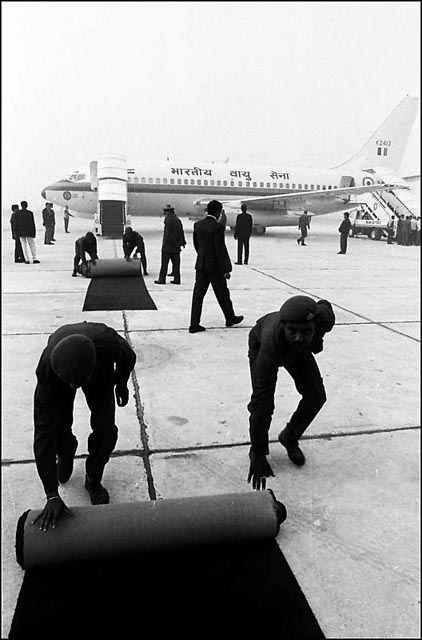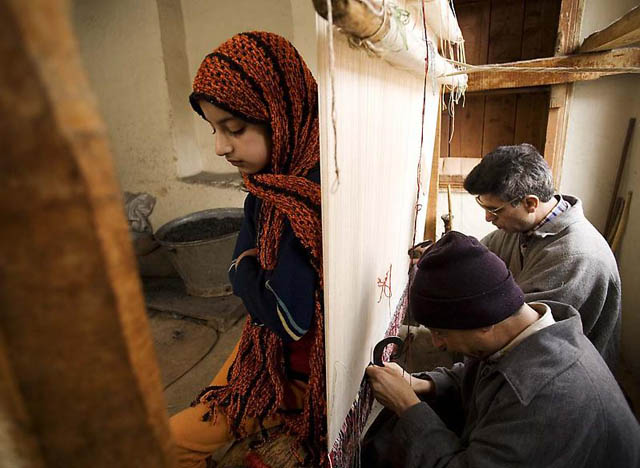
Think of home, and for many Indian immigrants it evokes memories of cool interiors, a whirring fan and the street sounds floating from the outside.
Inside was a cool, domestic heaven, outside was the chaos, the traffic, the ugly realities of the work world, of political upheaval, of price cuts. It was always about inside and outside, two very different worlds. And now in our new global world it is about India interacting with a larger, more complex world at its doorstep.
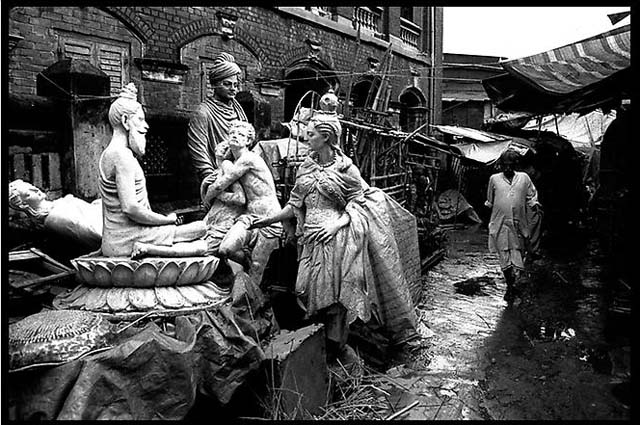
A fascinating group exhibition at the Aicon Gallery in New York captures these juxtaposed worlds in the work of several noted photographers. ‘The Home and the World’ takes its name and inspiration from the novel by Rabindranath Tagore (Ghare Baire) which was published in 1916 and portrays the small world of home and the big world outside. The film by Satyajit Ray, based on this novel, also beautifully captured this dichotomy of two worlds intersecting.
The exhibition shows the work of noted artists Sanjay Bhattacharyya, Sanjeet Chowdhury, Prabuddha Dasgupta, Jatinder Marwaha, Huma Mulji, Sarah Singh, Manish Swarup and Darshana Vora. It can be seen through February 27, 2010.
Here are a few glimpses of the inner and outer worlds which sometimes merge and sometimes collide in the India of today.
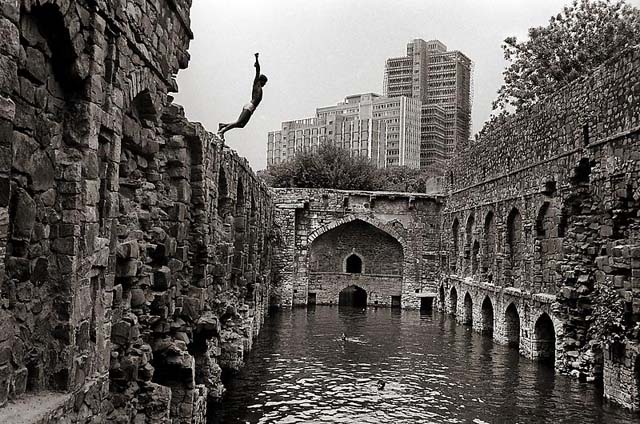
Notes on the Background of the Show from Aicon Gallery
“Rabindranath Tagore’s novel ‘The Home and the World’ (Ghare Baire) was first published in 1916. Set in early 20th century India, it is an account of a love-triangle set against the rhetoric and reality of anti-colonial politics. The three main characters are Nikhil, an English-educated, liberal Bengali, his wife Bimala, and his friend, the politician Sandip, who is a leading figure in the growing nationalist movement. The novel is structured around Bimala, who at the outset is depicted as a wife who is content with a world delimited by her home. This viewpoint is initially challenged on a rhetorical level by Nikhil who believes that their love for each other cannot be true unless Bimala has more worldly knowledge – and this is provided by the arrival of Sandip. Bimala is entranced by his aggressive, anti-British political sentiments. The novel explores what is at stake when we turn away from the domestic cocoon and face the world. Shot in a stately fashion, Satyajit Ray’s film version conveys the claustrophobia of the domestic – for instance the viewer never sees the outside of Nikhil and Bimala’s palatial residence.
This exhibition ‘The Home and the World’ takes the novel and film as its starting point and examines the ways in which artists in India have used photography to capture the state of affairs unfurling in concentric circles from within their most immediate space and moving outward to shared environments of the nation and the region.
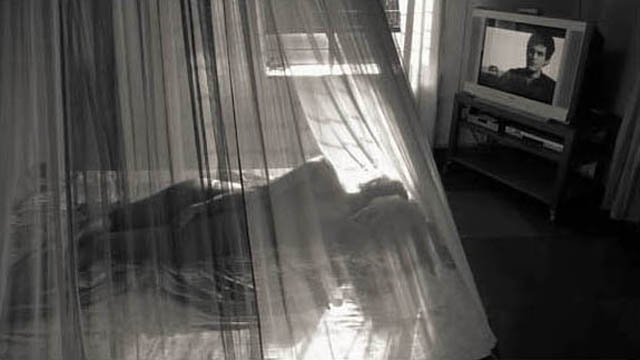
They examine what is at stake in trying to document a country which has quickly moved from independence to being a nascent superpower, where different groups clamor for their own self-determination and the forces of globalization bring change both welcome and unwelcome. In contrast to the deliberately restricted scenes in Ray’s film (for example the surrounding countryside only appears fleetingly), many of these artists have deliberately set out into the country that surrounds them, unearthing the ways in which it wants to be seen and uncovering some of the ways it does not.
This is an exhibition about worldliness – about exploring what lies beyond the domestic walls, which now boast security gates and CCTV. But it also about articulating a certain visual self-determination – this is not an exhibition about how the West sees South Asians – it is a show about how South Asians see themselves.”
